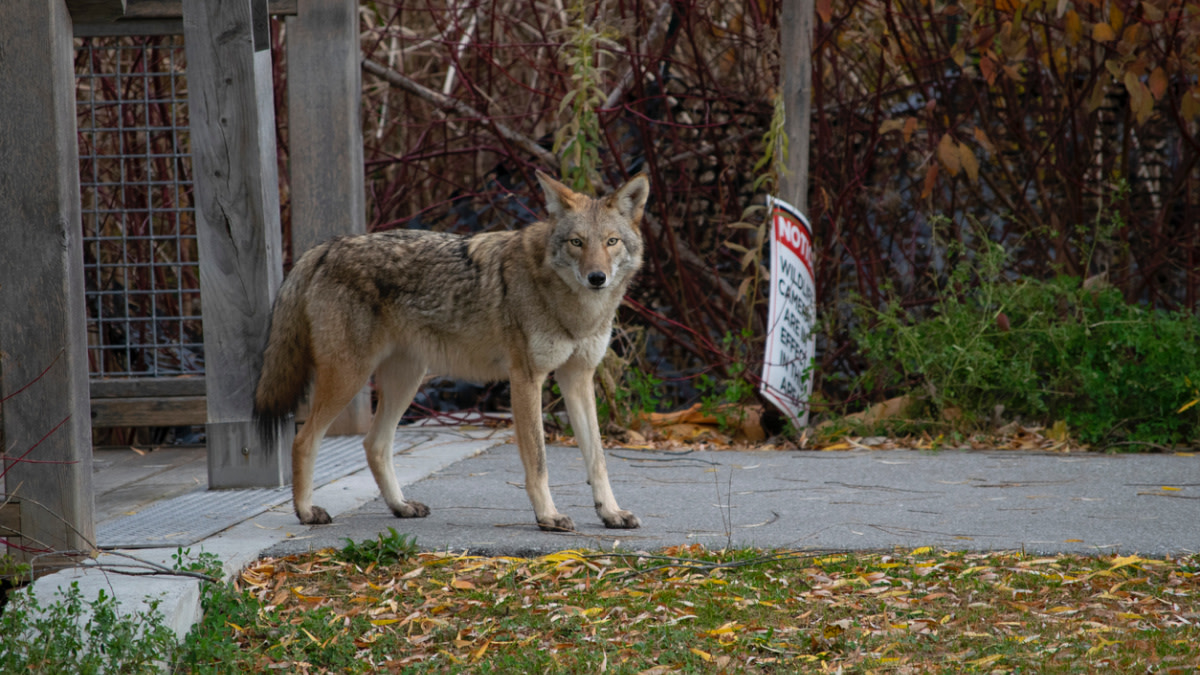
City officials, game wardens, and animal control authorities in Dallas, Texas, are reeling after an urban coyote dragged a 2-year-old boy off his front porch in the early morning hours of May 3, 2022.
The boy’s name is Landon Thomas, and the injuries that he sustained during the attack sent him to a nearby hospital where doctors described his condition as “critical.” According to a local blog, he emerged from surgery in stable condition “with severe lacerations to his face.”
Shortly after the incident, a responding police officer fired shots at the coyote before it quickly retreated into a nearby patch of woods. Police then attempted to locate the animal by searching for blood trails with thermal imaging devices, but no coyotes were found in the immediate aftermath of the shooting.
Residents of the neighborhood where the toddler was attacked say this is not the first time a coyote has been observed acting aggressively in the area.
Another resident of the same Dallas neighborhood, Clark Collier, also encountered a seemingly aggressive coyote while he and his children played at a nearby school park on Easter Sunday. He said that coyote “locked eyes” with one of his kids.
“Fortunately, we were able to scare the coyote into this little drainage area, into the creek right here, but I called the city right after that and reported it, and said ‘Hey, this is not normal. This coyote appears like it’s gonna attack somebody,’” Collier told NBC 5 Dallas-Fort Worth. “I wish they would have taken us more seriously, and it didn’t take a child getting sent to the hospital to provoke some action.”
According to local news reports, Collier’s complaint and Landon Thomas’ Tuesday morning attack were just two of several reports issued by Dallas residents to the city’s animal services department in recent months.
Upon request of call records, Dallas Animal Services (DAS) revealed during a recent press conference that there have been 14 reports made related to coyote sightings in and around the area of Thomas’ attack.
In a press release issued on Thursday morning, the DAS said that after its officers and the city’s wildlife biologist walked the neighborhood and met with residents, “multiple residents reported that people in the area have been feeding the coyote.”
Author, natural historian, and professor of Western history Dan Flores wrote a book about coyotes in 2016 titled Coyote America. He says that this type of aggressive behavior among urban coyote populations is not unheard of.
“After a few generations of city life, [coyotes] lose whatever fear of us they ever had, which probably wasn’t much to begin with,” Flores writes in a chapter of Coyote America titled “Bright Lights, Big City.”
Flores goes on to argue that coyotes are uniquely adapted for unnatural urban environments like those found within the confines of Dallas. He says that the coyote’s abilities to survive and thrive among the trappings of modern human culture might be an unintended ecological consequence of our failed attempts to eradicate the species during previous generations.
According to a May 5 article published by Dallas’ NBC 5, three Dallas coyotes have now been killed by agents with a Texas division of the United States Department of Agriculture. Though these three coyotes were deemed aggressive by the agency, officials have not definitively linked any of them to the attack on Landon Thomas.
“That is because, while DNA can be easily accessed from the animals, the victim had all possible DNA scrubbed clean after he was rushed to the hospital for care,” the article states.
The NBC 5 piece goes on to say that the brains of all three animals have been sent off for rabies testing, though results are still pending.
According to Flores, rabies does not commonly inflict coyote populations. “Unlike foxes, coyotes, except for a small population in South Texas, are not carriers of rabies,” Flores wrote in Coyote America. “Although, like us, a coyote can be infected if bitten by a rabid skunk, fox, or racoon.”
Some residents of the neighborhood where Thomas was attacked believe that the city of Dallas has wrongly accused them of feeding and even petting coyotes in the area.
A neighbor named Meredith Lohse told NBC 5 that the city did not take the community’s concerns seriously, and officials failed to educate residents about the scale of the aggressive coyote behavior that had taken root in her Dallas neighborhood.
“We tried to protect our own, and we tried to depend on those in a position of power, and they brushed us off,” Lohse told NBC 5.
DAS Director Mellissa Weber responded with this statement, provided to NBC 5: “There was never any intent to blame the community for this, but we do have multiple reports of intentional and unintentional feeding of the coyotes.”
Dallas’ urban wildlife biologists say that unintentional feeding of coyotes includes leaving trash out overnight, feeding outdoor cats, and over-filling bird feeders. All of these common activities, authorities say, can serve to habituate the urban coyotes living in the city of Dallas.
In his book, Flores writes that the coyote’s colonization of large urban environments has become an increasingly common phenomenon all over the United States. He cites thriving coyote populations in Los Angeles, Denver, Seattle, Chicago, St. Louis, Cleveland, and even New York City.
He says that, while urban coyote populations aren’t going away anytime soon, there are actions that city-dwellers can take to discourage these human-adapted canids from becoming too brazen and aggressive.
“If a coyote doesn’t retreat from you, or acts in any way aggressive, stand tall, raise your hands over your head to underscore the fact that you’re a hell of a lot bigger than it is, and shout,” he wrote. “If you’ve got a good arm, pick up a few rocks and prepare to deliver a Nolan Ryan dust-off fastball. Give the coyote every indication that you’re fully prepared to kick its little ass halfway to Sunday.”




